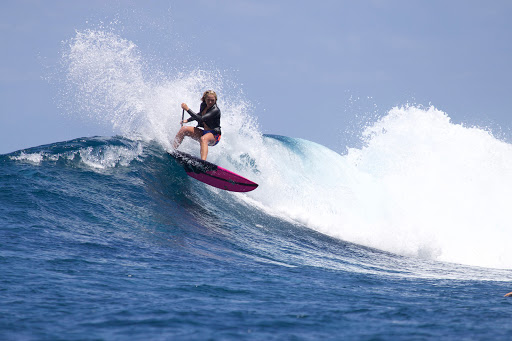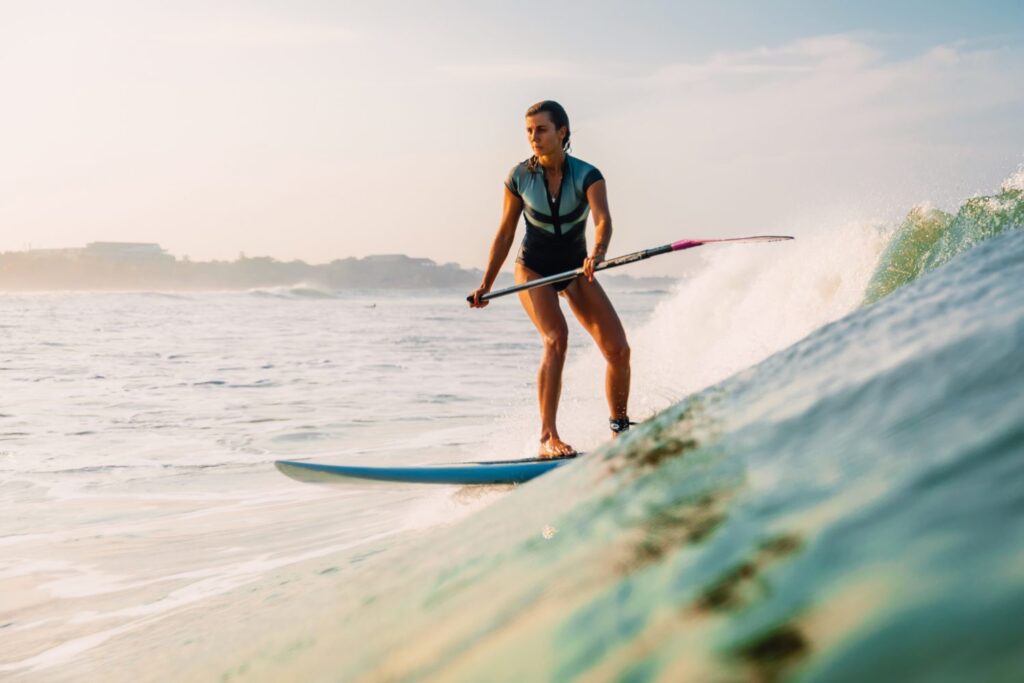Uncategorized
Choosing the Best SUP Surf for Women
Surfing on a Sup can be one of the most pleasurable ways of enjoying the sport. The feeling of being lifted by a wave, pushing you forward, as you make a sharp bottom turn and scream down the line is exhilarating. You will be able to hear friends and fellow surfers hoop and holler while you catch the perfect wave, bringing a smile to your face. Combine this with a warm summer day, sitting placid on the vast ocean as the sun warms your bones and some may say its the perfect outdoor activity.
For these reasons alone, the sport has begun to explode on the coasts where waves are plenty. Men, children, and now even more women are chasing the bliss equated with surf, and at any age.
And one of the most accessible ways of entering the surfing world is on a paddleboard. The ability to constantly stand allows the rider to assume the surfing position quicker as well as be able to see the oncoming waves more clearly. This means, the two most difficult skills to pick up in order to surf successfully have been greatly reduced or, in some cases, eliminated.
SUP surf allows novices to feel the rush of surfing quicker, providing an open hand to those who have only dreamed of feeling the rush.
However, after a few sessions in the salt, beginners often wonder what the next step should be. Sure, they may begin learning on a standard 10’6” board, but what about progression? Which board should they set their sights on next? This can especially be intimidating for some women as surfing has always been a male-centered sport (though that change is quickly coming).
Well, there are a few aspects of the board and an assessment of your skill level to consider before purchase.
This includes:
Size
–of the rider
-and the board
Skill
-how long have you been surfing?
-how quickly do you want to progress?
Waves
-where will you be surfing?
-what size waves?
Construction
-what is the board made out of?
Let’s start with size.
SUP surfboards come in all shapes, sizes, rocker choices, tail designs, and fin placements. It can be confusing.
As a general guideline, if you are looking to purchase a board strictly for surfing, the best choice is a smaller one. Most everyone starts on a 10’6” board, paddling flat water, getting to know the tips and tricks. From there, SUP surfboards are usually sized underneath the standard board. The comfortable range of anywhere between 8′ to 10′ will provide paddlers with a platform to learn and grow. Anything under 8′ and you will have to be a small-sized paddler or incredibly experienced, in which case, you will not need this guideline. But, as a bonus, most paddlers do not move on from these size rages.
In regards to body size, the obvious guideline to follow is the bigger the body, the bigger the board. SUP shops should have a qualified professional to help you determine which board will adequately float you in the ocean. It is always best to take their advice in this regard. Generally speaking though, paddlers will have a good idea about what board will work and what won’t. Follow your instinct as well.
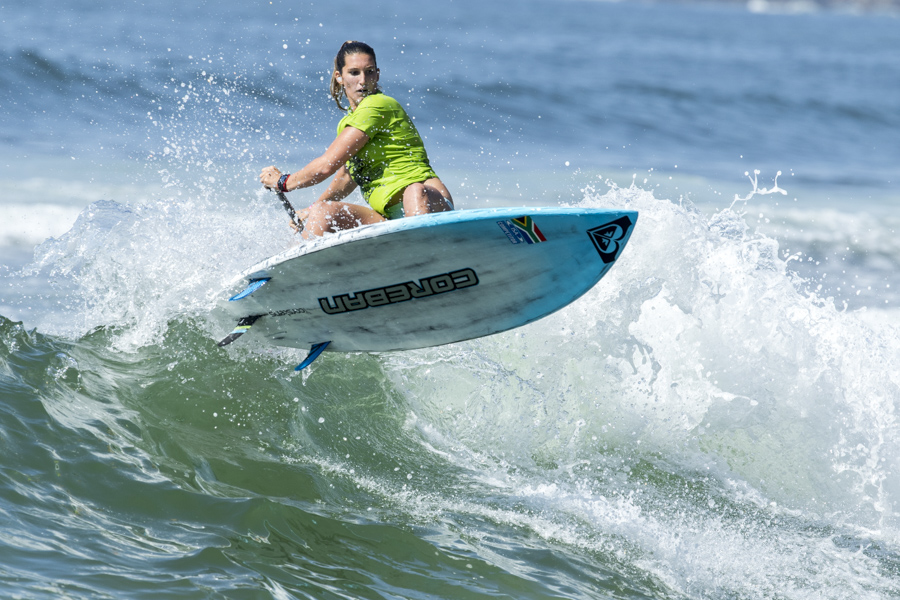
Let’s move on to skill.
As this is a guideline for women to move into SUP surf, it is understood most readers are not going to be experienced. This may persuade newbies to go with a 10′ board to give them more float, an easier surface to stand on, and a gentle gliding board that will act like a surf longboard. Also, most 10′ boards will not have a ton of rocker- meaning they will not have a curve from the tail to the nose to allow surfers to drop into steeper waves. Think smooth surfing in waist-high waves.
Anything smaller than that and most constructions are trying to mimic a short-board style surfer. This means higher amounts of rocker, steeper, faster waves, and the most maneuverability up and down the face. These boards are typically created for experienced surfers or for smaller bodies. So, if you see yourself progressing in the sport or have a smaller stature, look for a short-board type of board.
The next point is a big one.
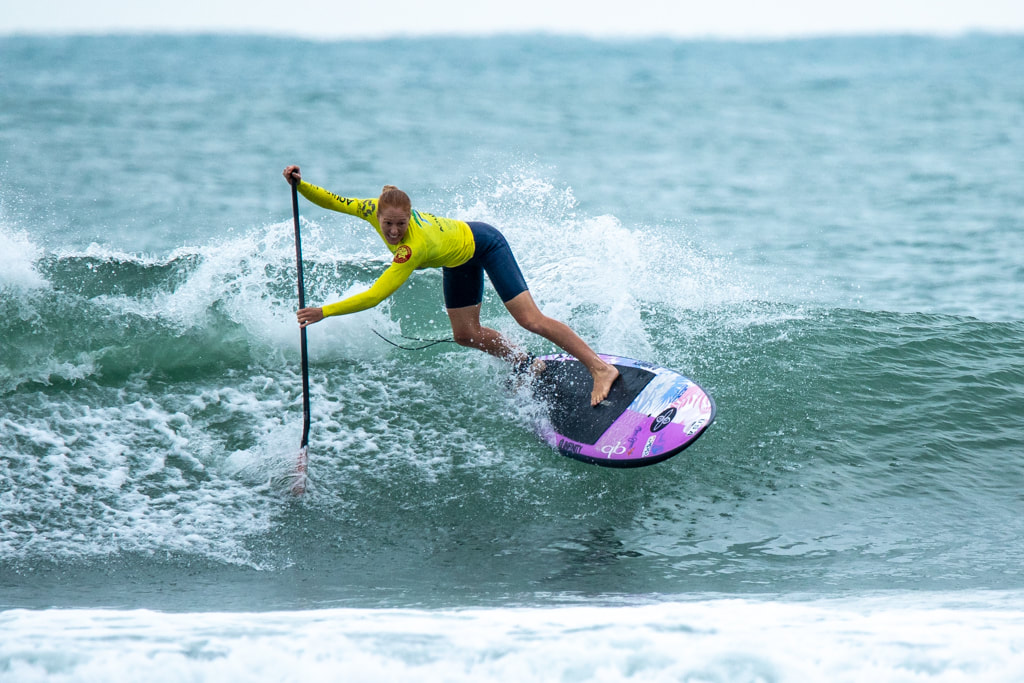
Most SUP surfers are lucky enough to find themselves close enough to a break in order to continuously surf and work on their skills. The first thing you must ask yourself is- are you familiar with the waves at your preferred spot?
If not, it is best again to talk with your local paddleboard shop or ask friends for recommendations. If you are, then this will be a little easier. The type of waves you surf will depend on the board you get unless you want to buy multiple boards for different types of waves. Most people do not want to spend that type of cash.
If you are one of these people, refer to the above section. Are the waves in your spot generally small, forgiving, and chunky or are they a large, fast and hollow? The first type of wave will require a longboard just to be able to get onto a wave, the second type of wave is dangerous for a big board, especially for a lighter body. With a big wave, come big wipeouts. And if you are smaller in stature, then the board can become dangerous to you and your fellow surfers if you find yourself unable to control it.
Again, we cannot stress this enough. Ask a professional at your local paddle shop like us at Walk on Water and we will be able to answer any specific questions.
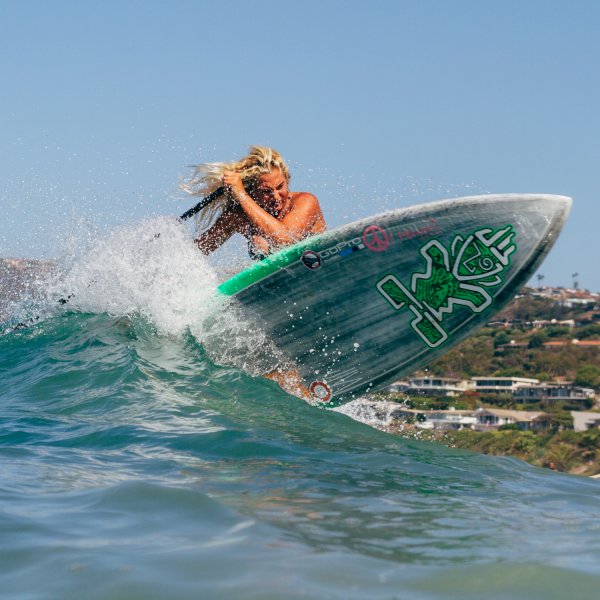
Ok, so the last aspect to consider is construction. SUP surfboards can end up taking a ton of damage, especially for beginners. We have seen countless repairs being done on boards whose riders have fallen on, putting a knee through the pad of the board or ramming the nose into the sand on a beach break.
If you feel this describes your beginning styles, you may want to consider learning on a soft-top board or an inflatable. While these boards may not be the best to surf aggressively on, they provide a safe platform for the novice. Bouncing off a foam board or a board filled with air will always feel better than landing on an epoxy or fiberglass board.
However, if you feel confident in your balance skills, even on the ocean, then an epoxy or fiberglass board is the way to go in order to maximize your surfing fun. These boards will maneuver better in the waves, allowing riders to get sideways and ride down the line of the wave. They will also paddle better and straighter in the water increasing the chances of catching a wave.
The only other construction of board available to paddlers is a carbon-fiber or brushed carbon board. We do not recommend a brushed carbon-fiber board to beginners. These constructions are more fragile than the previously mentioned types and will break, crack or split quite easily in comparison.
Once you find yourself moving forward with your skills, then a carbon-fiber board should be on your radar. If for no other reason than that they are much easier to carry to and from the beach!
There are many factors to consider before purchasing your first SUP surfboard. Depending on your skill level, size, the types of waves you find yourself surfing, and the construction of the board, these are all aspects of the sport to consider. Generally, women tend to purchase smaller boards so start with a 10′ and work your way down. Of course, with this basic guideline in mind, it is always best to stop into your local paddle shop, such as Walk on Water, to ask any questions and continue growing your knowledge. And, as always, Walk on Water is always here to answer any questions, so send up a message or drop us an email and we will happily help you out! We look forward to seeing all the new faces at Assateague this summer!
